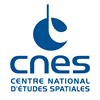Photometer design study
Introduction
The aim of this paper is to present the theoretical study in the field of solar photometry to measure the rate of aerosols present in the atmosphere. This study was the basis for the CALITOO pocket photometer for the school public as part of Operation Calisph'air. After its validation by LOA experts, CALITOO proved to be a good value for money, which attracted professionals of the study of the atmosphere throughout the World..
Calisph’Air is an educational project for the study of the atmosphere and the climate that accompanies the missions of satellites of study of the atmosphere Parasol, Calipso, IASI ...
This project is developed within the framework of the international educational and scientific GLOBE program which brings together students, teachers and scientists around the observation and collection of environmental data. GLOBE brings together more than 15,000 schools and 26,000 teachers from around the world via the Internet.
The program includes a study of aerosols, with Calipso data, but also measurements made from the ground, with solar photometers.
We have developed a new solar photometer, CALITOO, in order to simultaneously measure the optical thicknesses in several wavelengths, which makes it possible to determine the presence of aerosols and determine their origins.
In the first part of this "Design study", we will describe the method used to measure the distribution of aerosols (Aerosols measurements) and the method to calculate the AOD (Atmospheric Optical Depth).
The second part will ask questions that we consider important for the validation of the instrument and will present its qualification to scientists specializing in aerosols.






